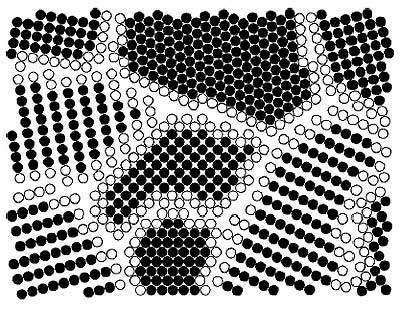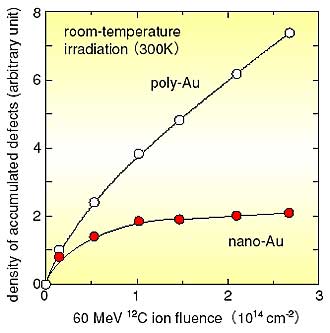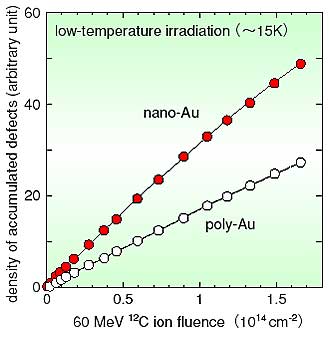"Nanocrystalline materials" means specific polycrystalline materials which consist of very small crystal grains about 10 nm in diameter (Fig. 6-5). In nanocrystalline materials, there exists a very high density of grain boundaries due to the small size of each grain. Nanocrystalline materials were expected generally to be radiation-resistant, because irradiation-produced crystal defects can be annihilated when the defects diffuse to grain boundaries, i.e., to the surfaces of the grains. However, the irradiation behavior of nanocrystalline materials has never been compared experimentally with that of ordinary polycrystalline materials. Are nanocrystalline materials really radiation-resistant?
To clarify this question, we have performed ion irradiation experiments on nanocrystalline gold (nano-Au) with a 23 nm grain size, at room temperature (300K) and at low temperature (~15K), comparing the results with ordinary polycrystalline gold (poly-Au). The reason why we have chosen Au as a specimen is to avoid any possible complexity caused by surface or interface oxidation.
For room-temperature irradiation, nano-Au appears to be radiation-resistant as is ordinarily expected (Fig. 6-6). On the contrary, irradiation-produced defects are easy to accumulate in nano-Au under low-temperature irradiation conditions (Fig. 6-7).
Following our understanding of electron, rather than ion, irradiation effects in such systems, we can explain the above result if the displacement threshold energy for Au atoms near grain boundaries in nano-Au becomes effectively about half of that in poly-Au. In other words, defects in nano-Au are easier to generate than those in poly-Au. Thus, nanocrystalline materials are not always radiation-resistant, depending on the conditions of practical use. |



